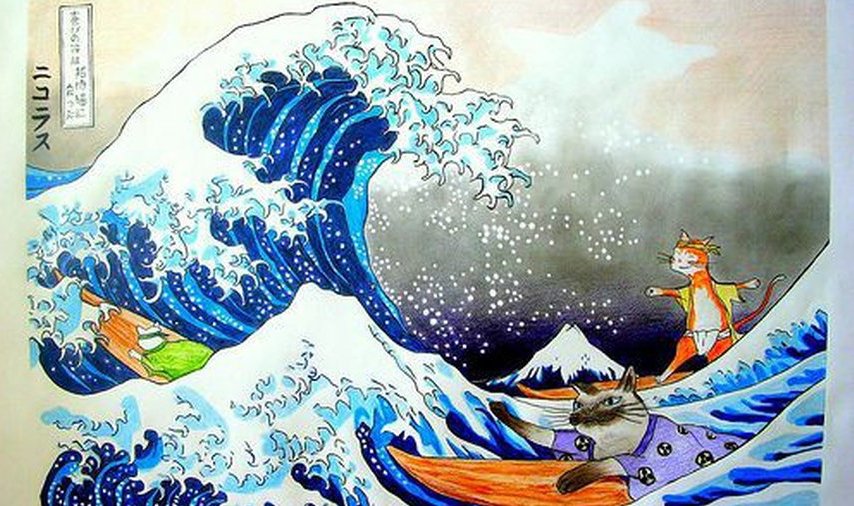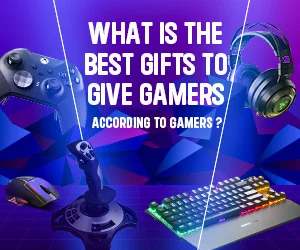wave
In the December article “What the success of the Altkokin looks like” we promised to publish a post in which the operation of special Application Tokens (CATs) is described in more detail. This article will deal specifically with this technology, which allows any business to issue its own internal digital currency on the block to pay for goods and services within its project.

The technology of the blockhouse lying At the heart of CATs, attracts the attention of representatives of a wide range of industries: from finance and insurance to show business and agriculture. Such close attention to this technology is not accidental.
The third wave of development of blocking solutions is approaching, which calls attention to CATs technology. But in order to better understand the trends of today, it is worth starting with a prehistory.
The first and second wave: enthusiasts and anarchists
The first wave of blockage can be considered the initial stage of technology development. At the very end of the zero blockade was inseparable from the Bitcoin crypto currency, and almost no one knew about it. Then enthusiastic amateurs and anarchists used it. In a word, the pioneers who saw in this technology something special and explored its possibilities with unconcealed curiosity and ecstasy.
In about 2011 Bitcoin began to attract some public attention. Increased the overall activity of users, contributing to the expansion of the system. Bitcoin then received recognition as a protocol based on the blockbuster. Its security mechanisms have been tested, the user base has grown significantly, the bugs have been debugged. And all this before the appearance of any real competitors.
The culmination of the first wave reached during the global hype in 2013, which rose first thanks to the economic problems of Cyprus, and then because of the Chinese stock bubble of November-December, when The exchange rate of bitcoins in yuan was equal to the exchange rate of bitcoins for dollars. These developments have boosted the price of Bitcoin to a record at the time of heights – 1149 US dollars, as of November 30, 2013.
That was the heyday of speculative activities: Bitcoin market MtGox still worked and was in the lead market. Bitcoin regularly got into the general flow of news due to its volatility. And then the bubble burst just as suddenly as it once began to grow.
The second wave was marked by the collapse of MtGox Exchange. The bitcoin rate fell. The leading mass media criticized the situation sharply: their skepticism prevailed in their assessments.
Despite the launch of several hundred new crypto-currencies, popular users at that time managed to become units. One example is Litecoin, which has achieved growth in market capitalization, which today amounts to more than $ 179 million. Crypto currency is based on the same technology as Bitcoin, but unlike the latter, it offered almost nothing fundamentally new.
Tangible changes occurred in 2014-2015. Then the new solutions were developed quickly, passing the test already on the market. The driving force in this process was the depreciation of Bitcoin, the holders of which have started to invest his tokens in other projects in the hope to learn from this income. Money wandered from one project to another. These two years have served as an experimental ground not only for technology, but also for business models, developers and entrepreneurs.
Third wave: platforms, not currencies
The growing professionalism of the sector, a clearer regulatory environment, a more conscious understanding of bottlenecks and those business needs where the blockbuster can really make a difference for the better – these are all characteristics of the current stage. By citing an analogy, we can say that this is the very moment when the TCP / IP Internet protocol has grown into e-commerce. The companies today have already begun to understand how the blockage can improve their efficiency and productivity, and the block-developers and entrepreneurs are ready to provide them with the necessary solutions.
The key feature of the third wave is the emergence of non-crypto-currencies (not monetary systems based on the block system) -platforms that solve a number of tasks and are more often used as an infrastructure supporting a wide range of applications than they themselves are applications.
Therefore To start let’s define what a special tokens represent applications or, as they are called, apptokens or appcoin. To designate this concept, I propose to use the name Custom Application Tokens, reducing it to CATs. I must say that I do not really like the name appcoin, because it focuses on the monetary side of the issue and has already managed to get a bad advertisement in the press.
Apptoken or CAT is a cryptographically protected to be transmitted block-token. As a rule, it is an important functional element of the application, possessing some actual value, established with the help of open market mechanisms.
Let’s take a deeper look at the essence of this definition. Cryptographically protected means that classical public key encryption is used to support the operation of the registry and that the token holder retains control over them until its private key is known to outsiders.
In fact, a token is a record in a public key Registry. Its interpretation is beyond the scope of the registry as such and must be determined from outside, based on the features of the application that uses the registry. The token is integrated into the functionality of the application, which can be done in different ways.
The actual cost is assigned to the token via its integration into the application. As long as the application offers some value, the associated token also has value.
The present value of the token is determined in the course of trading on the open market, which is formed in a natural way. Their decentralized nature promotes the appearance of trading platforms on top of them. Block-system systems can have their own set of tools for selling trade.
Since all this sounds very abstract, let’s look at a small example showing how universal this approach can be. Imagine that we are launching a social network and want to attract money for its development. We can create an internal currency for our network by issuing tokens based on the public blockage. The choice of an open detachment can be a very important step, since it allows for transparency and credibility. The internal currency can be transferred within the network and used to pay for certain services. We also can promise to provide banner advertising on the entire network for, say, 100 tokens. If the network becomes successful, our user base will start to grow and more people will start to see the advertisement. This, of course, means that the value of our token should also grow, since advertisers will receive more exhaust for the same money.
By releasing such tokens, we provide valuable services to network users (the possibility of transferring value in the form of certain conditional Units), we raise funds for development and even provide those who want the investment mechanism. We are able to attract funds directly from the crowd and from users of the social network who are able to see the value of the network in practice.
The nature of the tokens can vary, but they are all united by two points: integration into some external applications and determining the actual value using a free market mechanism
Of course, as the first examples of the CATs application, one can call the Bitcoin network with its own token, as well as the own tokens of thousands of other crypto-currencies created after Bitcoin. In this case, the application itself is the blockade itself. Own tokens play an important role in the existence of open block systems. Such tokens can be called “native” CATs.
Soon after the appearance of Bitcoin, people realized that blockbodies are nothing but distributed rosters, and as such they can store records associated with more than one token. So there were special tokens (NXT, Bitshares, Ethereum, Waves, etc.). The methods of using them can be extremely universal and are in fact determined by the external application that uses them. After all, they are just CATs, and therefore the scope of their application is limited only by the imagination.
In addition to the case with attachments, many are interested in using them to attract funding. One of the results of the development of the ecosystem of crypto-currencies was a scheme called ICO (initial coin offering). Own tokens of the new system are sold to investors, and the funds collected in this way are used to develop the project. Investors, in turn, rely on profit in case of success of the new crypto currency. ICO is now experiencing a boom in popularity, as it is a fairly well-thought-out scheme for raising funds for projects related to blockbuster projects. Special tokens allow you to apply the ICO scheme not only for crypto-currency systems, but also for a wider range of projects. To do this, a special block-token must become one of the functional elements of your application. In addition, there must be some mechanism that allows to link the cost of the token with the overall success of the application.
The advantages to attracting financing are obvious. Turning to your user base, you get not only money, but also feedback, services of testers and promoters.
The attraction of funds in the form of crowd-calling of tokens can become much simpler in the implementation of the process than conventional venture investment. Moreover, each dollar attracted in this way is of much greater value, because it is provided by the activity of the community. This market is rapidly gaining momentum and can soon seriously change the situation in the field of venture investment.
Of course, on this path the market is waiting for a lot of obvious obstacles. It is important to note that special tokens are not applicable to all types of projects. Let’s enumerate certain approaches that should be avoided.
- You can not promise tokens buyers the payment of dividends, as this will already be an offer of securities. If you really need to do this, contact the Securities and Exchange Commission and apply for an IPO there.
- Tokens can not represent a share in the share capital of your company without the approval of the relevant supervisory authorities. You can assign certain voting rights to them, for example, to give users the opportunity to determine the direction of the project. However, you can not associate these rights with a share in the capital without a proper legal study of the matter.
- You can not release tokens and promise to redeem them back with a markup afterwards. Here the offer of securities is clearly traced.
- CATs, in fact, are a digital product with a flexible cost. By selling them, you do not violate any laws. Use them in a working version of the application, or at least in a workable prototype. CATs are not considered securities until the proper registration process has taken place in the relevant authorities. Attempts to use them in this capacity are actually doomed to failure and will have a negative impact on the entire ecosystem.
Perhaps, already now we are seeing a paradigm shift in the business practice of crowd-hosting, but this mechanism is still very fragile. Most likely in the near future there will be many new applications and tokens. Think about how CATs can be used in your product? Perhaps, you will come up with some new and cool idea.
The fourth and fifth wave: the state blockade and the seizure of everyday life
In the future, we can expect the fourth wave to come: the blockade, which received support from government agencies and commercial banks. Such projects are currently in the process of thorough research and development. Basically, it’s about controlled registries, and so it’s too early to talk about how they will compete or coexist with the open platforms of earlier block-wave waves. Along with them, probably, the fifth wave will also come that will turn the blockade into an almost ubiquitous element of everyday life with the help of the Internet of things and objects, devices and devices connected to the network.









